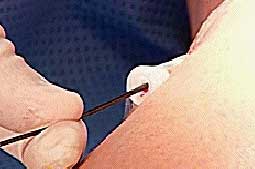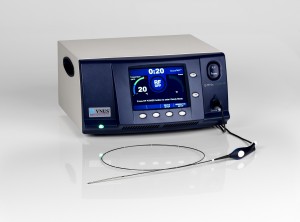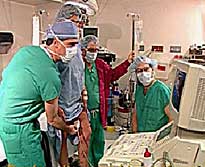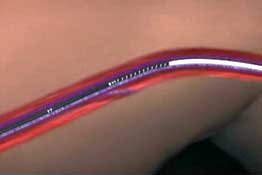Finally. A solution to leg pain and varicose veins.
If you experience discomfort, swelling and varicose veins in your legs, you may be suffering from superficial venous reflux disease. Approximately 25 million people in the United States suffer from venous reflux. Traditionally patients diagnosed with venous reflux would undergo varicose vein stripping surgery. Now, patients can be treated with the Closure® procedure — a minimally invasive alternative to painful vein stripping surgery.
Venous reflux or venous insufficiency develops when the valves that usually keep blood flowing out of your legs become damaged or diseased.
The main varicose vein treatment alternative is to re-route blood flow through healthy veins. Traditionally, this has been done by surgically removing (stripping) the troublesome varicose vein from your leg. Closure provides a less-invasive alternative to vein stripping by closing the diseased vein instead.
Experience the Closure Procedure
The Closure procedure is an office based performed using either local anesthesia. The physician numbs the vein as the procedure is performed. The procedure consists of four principal steps.
Map the Saphenous Vein: A typical procedure begins with noninvasive ultrasound imaging of the varicose vein to trace its location. This allows the physician to determine the site where the Closure catheter will be inserted and to mark the desired position of the catheter tip to begin treatment.

Insert the Closure Catheter: After the physician accesses the saphenous vein, the Closure catheter is inserted into the vein and advanced to the uppermost segment of the vein. The physician then typically injects a volume of dilute anesthetic fluid into the area surrounding the vein. This numbs the leg, helps squeeze blood out of the vein and provides a fluid layer outside the vein to protect surrounding tissue from heat once the catheter starts delivering RF energy allowing the catheter to preferentially heat the vein wall, rather than the blood.
Deliver RF Energy and Withdraw Catheter: Noninvasive ultrasound is used to confirm the catheter tip position and the physician then activates the RF generator, causing the electrodes at the tip of the catheter to heat the vein wall to a target temperature to 120 Centigrade. As the vein wall is heated, the vein shrinks and the catheter is withdrawn. During catheter pullback, which typically occurs over only 3-4 minutes, the RF generator regularly adjusts the power level to maintain target temperature to effectively shrink collagen in the vein wall and close the vein over an extended length.
Confirm Closing of Vein: After treatment, ultrasound imaging is used to confirm closing of the vein. If a portion of the vein is not closed, the catheter can be reinserted and energy reapplied. After the procedure, the narrowed vein gradually becomes fibrous, sealing the interior of the vein walls and naturally redirecting blood flow to healthy veins. Experienced physicians often complete the procedure in 45 to 60 minutes.
Ninety-eight percent of patients who have undergone the Closure procedure are willing to recommend the varicose vein treatment to a friend or family member
Physicians generally instruct their patients to walk regularly for several days after the Closure procedure and return within 72 hours for an ultrasound examination. Physicians may prescribe compression stockings to be worn for several days or weeks after the procedure. Compression stockings are prescribed as a routine item for varicose vein procedures with the goal of enhancing patient comfort in the initial days after treatment.
Patients who undergo the Closure procedure typically resume normal activities within a day.
Closure Procedure Highlights
- Relief of symptoms
- Outpatient procedure
- Resume activities typically within a day
- Good cosmetic outcome with minimal or no scarring, bruising, or swelling
As with any medical intervention, potential risks and complications exist with the Closure procedure. You should consult your physician to receive further information.








